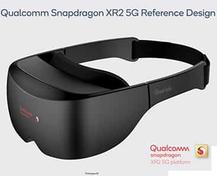XR vs AR vs VR: Understand the Differences
Advertisement
Introduction : The terms XR, AR, and VR describe a spectrum of technologies that blend the digital and physical worlds. While related, they represent fundamentally different levels of immersion and interaction with reality.
The Spectrum of Reality
- Think of these technologies as a continuum, ranging from the purely physical world to a purely virtual one.
- XR (Extended Reality) is the umbrella term that encompasses this entire spectrum. It’s not a single technology but a category that includes AR, VR, and MR.
Understanding Extended Reality (XR)
| Feature | Augmented Reality (AR) | Virtual Reality (VR) | Mixed Reality (MR) |
|---|---|---|---|
| Core Concept | Overlay & Enhance | Replace & Immerse | Merge & Interact |
| User’s view | Sees the real world with digital information superimposed on it. | Sees only a completely digital, computer generated world. | Sees the real world with digital objects that appear to be part of it. |
| Relationship with reality | The real world is central and is enhanced by digital content. | The real world is completely blocked out and replaced by a virtual one. | The real and virtual worlds coexist and are intertwined. |
| Interaction | Users can interact with the digital overlays, but the overlays typically do not interact with the real world. | Users can fully interact with the objects and environment within the virtual world. | Digital objects are spatially aware and can interact with real-world surfaces and objects. |
| Device Type | Smartphones (most common), smart glasses (e.g., Google Glass), and advanced AR headsets. | Fully enclosed headsets (e.g., Meta Quest, PlayStation VR) that block out all external light. | Advanced headsets with sophisticated cameras and sensors (e.g., Microsoft HoloLens, Magic Leap). |
| Primary Goal | To provide contextually relevant, glanceable information to the user without disrupting their view of reality. | To transport the user to another place, creating a powerful sense of “presence” in a simulated environment. | To create a hybrid environment where digital content becomes a tangible part of the user’s physical world. |
| Simple Analogy | Like the heads-up display in a fighter jet, showing vital information on a transparent screen. | Like being inside a video game, where the game world is all you can see and hear. | Like the holograms in Star Wars, which appear as solid objects within a real room. |
| Example Use case | A technician pointing their phone at a machine to see a digital overlay of its internal parts and repair instructions. | A medical student performing a simulated surgery in a completely virtual operating room. | An architect placing a full-scale, interactive holographic model of a new building in a real, empty lot to see how it fits. |
Summary:
The most important difference lies in how each technology treats the real world:
- AR adds to your reality. It keeps the real world as the foundation and layers digital information on top.
- VR replaces your reality. It completely substitutes the real world with a simulated one.
- MR merges with your reality. It blends digital objects into the real world so seamlessly that they appear to be physically present and can be interacted with as if they were real.
Advertisement
 RF
RF






